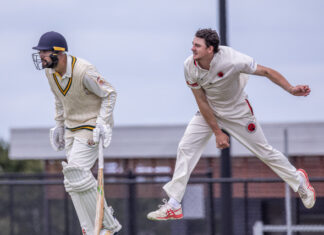By Lilly O’Gorman
JUST like his feathered friends are drawn back home, John Pleiters is drawn back to pigeon racing year after year.
“It’s like a drug, like a disease. You might have a break but you always get back into it,” John said.
John Pleiters is the president of the Pakenham/Nar Nar Goon Pigeon Racing Club and has been racing pigeons on and off since 1984.
“My grandfather bought me my first pair when I was about seven,” he said.
“They just grew on me. It is fascinating the way they come home.”
The Pakenham/Nar Nar Goon club is part of the Greater Melbourne Pigeon Federation, which includes Pakenham, Dandenong, Frankston, Peninsula and Croydon.
In each race, about 5000-6000 birds are released, with each individual flier allowed a 30 bird limit per race.
A total of 22 races take place each season, starting in June and finishing in the first week of December.
“It is very interesting because no one has been able to prove (a theory) on the bird’s homing instinct,” John said.
Birds naturally home where they are born, but during a race can come up against a myriad of challenges including predators, exhaustion and adverse weather conditions.
“Returns are quite good for the shorter races. But you could lose five to six birds during the longer races, due to predators such as hawks. That’s the unfortunate part of it.”
Even mobile phone towers have been found to disturb a pigeon’s homing abilities, which John says has “…something to do with magnetic fields.”
The races gradually get further as the season progresses. The first few races will start from Sunshine and in following weeks the birds will be released from Shepparton, after that, Tocumwal, then Griffith and finally the big one from Queensland.
“It’s a bloody big achievement. You get them home and it’s amazing.”
The longest race is 1000km, which can be completed in about a day to a day-and-a-half depending on the weather and the wind.
On a good day, the birds reach average speeds of 1600 metres per minute.
John had a good season last year, but had to miss this season due to moving house. The pigeons can’t be retrained to return to a new location, but John has already used the old pigeons to breed new competitors for the next season.
To train the birds, John takes them to work with him, a different location each time, and releases them to fly home from there. “They’ve got to be fit.”
“It’s a good sport, and like any sport there is no money in it. You do it simply because you enjoy doing it.”
Get the latest news to your email inbox FREE!
REGISTER




